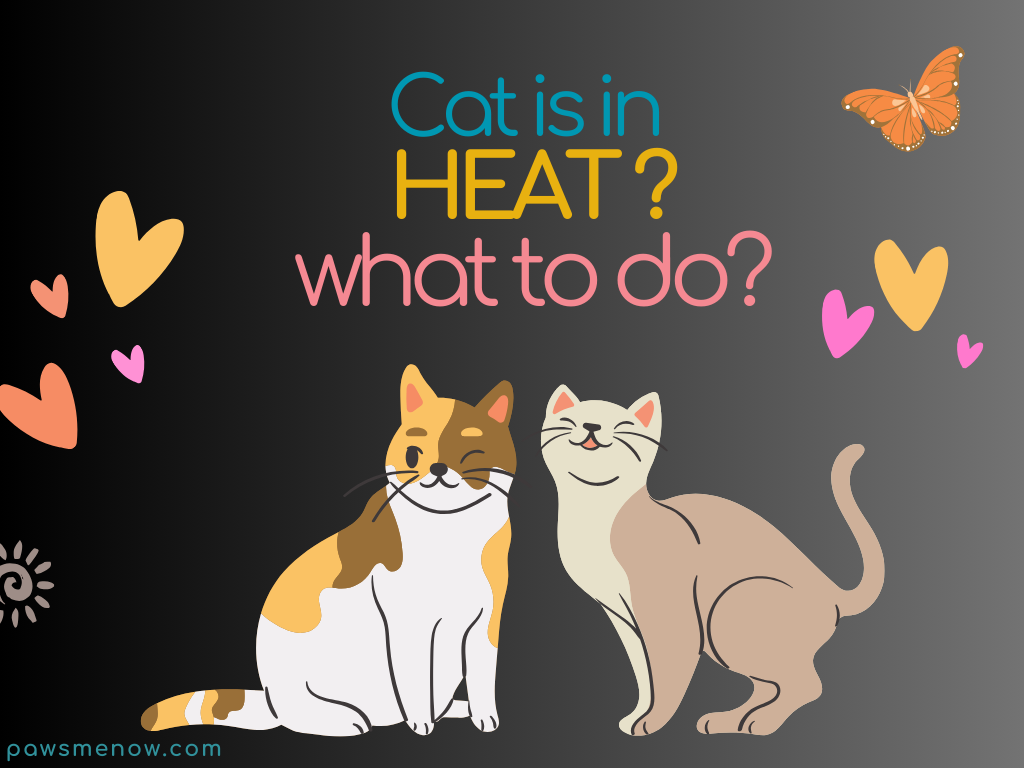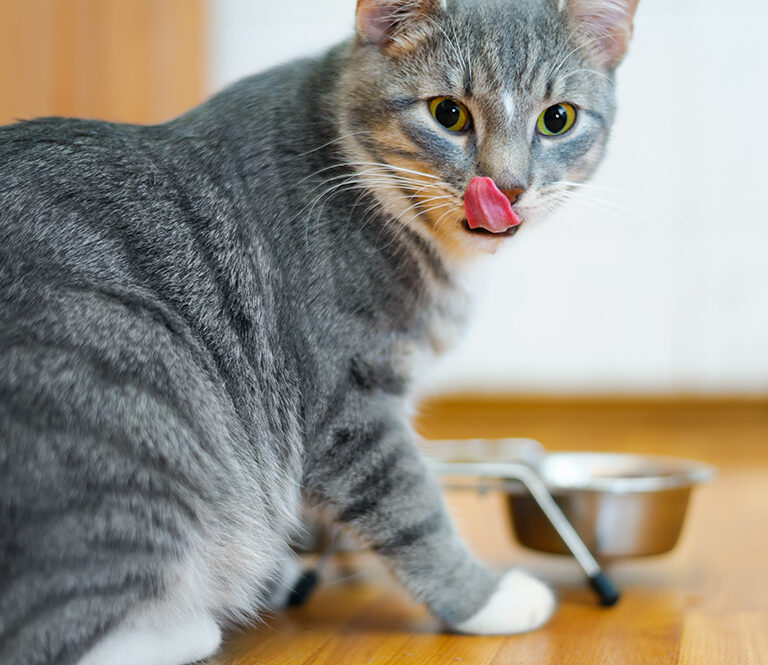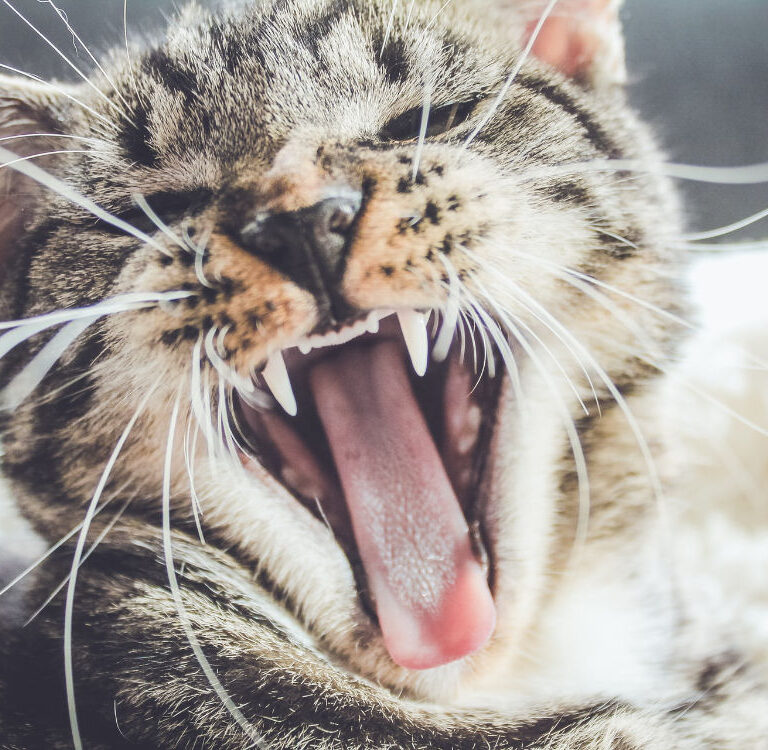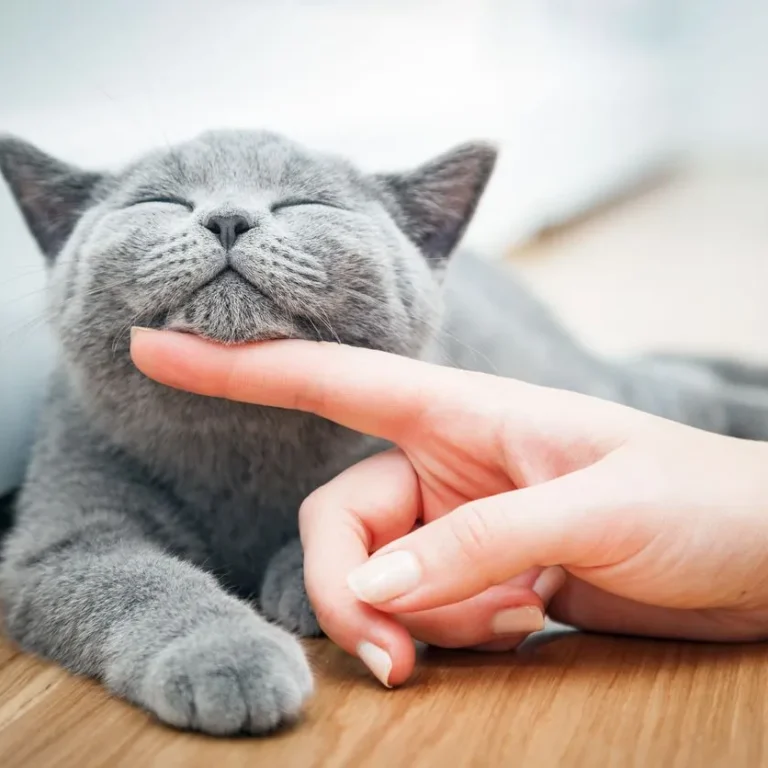Cat is in Heat? What to Do?
Cats are naturally very good reproducers. Female cats go through a periodic cycle called Heat or Estrous to reproduce new kittens to this world. In this cycle, your cat can behave quite differently, if you are already a cat owner, you might have noticed this behavior. To spay your cat, it is important to recognize the signs indicating it is in heat. Knowing these signs will help you take timely action.
Understand The Heat in Cats
When your female cat is ready to have kittens, her body goes through some hormonal changes that cause noticeable behavior shifts. This phase is called Estrus, or simply “Heat.” Most cats go into heat for the first time around 6 to 10 months old and this cycle can repeat every 14 to 21 days until she either gets pregnant or you have her spayed!
The heat cycle in cats depends on the season and daylight timing. Normally cats are long-day breeders, so their heat cycle starts in spring or summer. But they can get pregnant almost any time of the year.
The Cat Heat Cycle
The Heat cycle in Cats is divided into 4 stages. You should know the stages so that you can identify the signs when your cat is in heat.
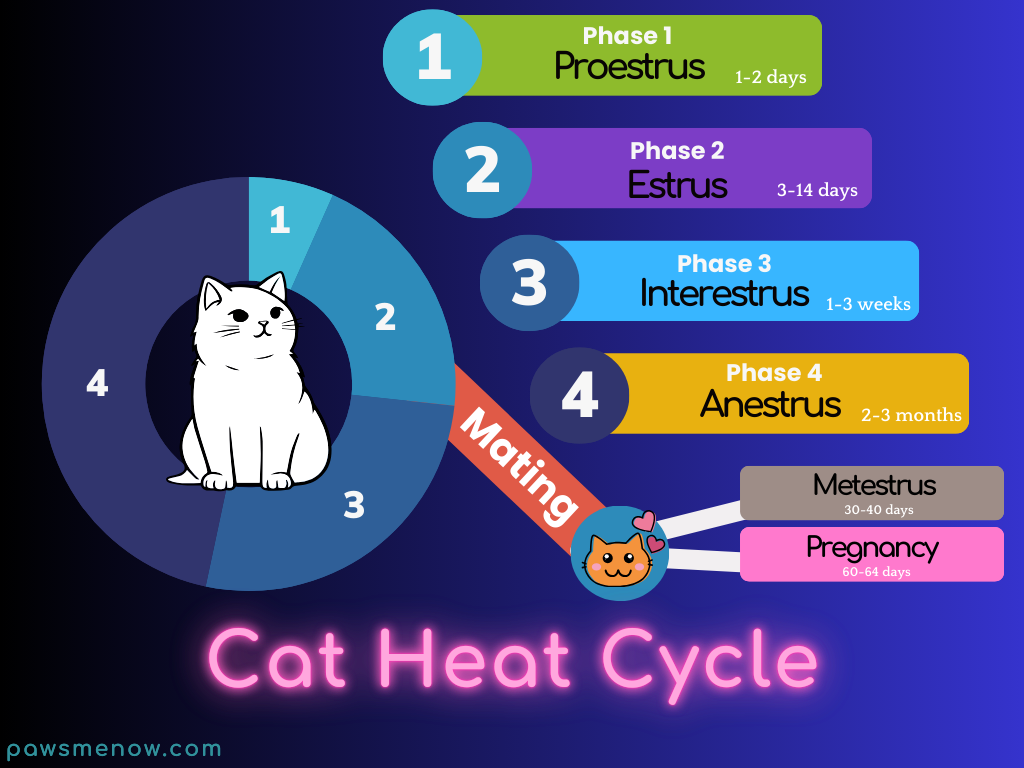
Proestrus
This is the first stage of the cycle when your cat’s body is getting ready for the next phase, called estrus. During this stage, her estrogen levels are on the rise, usually lasting a day or two. You might not notice any big changes in her behavior, but male cats certainly do! They’ll start showing more interest in her, even though she’s not exactly returning the affection just yet.
Estrus
The second stage is called estrus, and this is when you’ll definitely notice your cat is in heat. She’ll show clear behavioral changes, and during this time, she can get pregnant if she mates with a male cat. This stage typically lasts anywhere from a week to 14 days.
Interestrus or Metestrus
These stages are the timeframes between the estrus cycle. If your cat mates with a male and her eggs are fertilized, she moves into the Metestrus Stage, which lasts about 30 to 40 days. After that, if everything goes as planned, she’ll enter pregnancy, which typically lasts around 60 to 64 days.
If your cat doesn’t mate with a male or her eggs aren’t fertilized, she moves into a stage called Interestrus, which can last about 1 to 3 weeks. During this time, the signs of heat fade away, but don’t get too comfortable—it all starts over again with the proestrus stage soon after!
Anestrus
In between cycles, cats normally become inactive for 2 to 3 months. That period is called Anestrus. Anestrus typically occurs when the daytime is shorter, like from October to December.
Signs that you may notice during Cat is in Heat
Cats mostly show behavioral changes during their Heat time. The hormonal increases cause these changes. It is not hard to identify the cat heat signs. You may notice the below changes when your cat is in heat:
- Display of Overwhelmingly Affection: Your cat will show excessive affection to you or other cats when they are in heat. She will rub her head on all of the furniture or even on you. She will become restless at this time.
- Excessive Grooming: When your cat is in heat, you might notice her grooming herself more than usual, especially around her genital area. While there’s no bleeding when a cat is in heat, if you see her focusing on that area without any other typical signs of heat, there could be a chance she’s dealing with a urinary infection. Consult your vet immediately.
- Unusual Vocalizations: This is known as the “mating call,” where your cat will meow or yowl loudly to attract male cats. It can sound strange, and you might be surprised by how powerful her voice is! But don’t worry, she’s not in pain—this is totally normal behavior when a cat is in heat.
- Urinate Frequently: Don’t panic if your cat starts avoiding the litterbox or is peeing around the house. What she’s actually doing is spraying to mark her territory—a totally normal behavior when she’s in heat. It’s all thanks to her hormones, so don’t punish her for it. She’s just following her instincts!
- Loss of Appetite: When cats in heat, they may lose their appetite. In this period, your cat has lots on her mind other than eating so she may show less importance on eating.
- Escaping Behaviour: During this time, your cat might seem extra eager to get outside. It’s completely natural—she’s trying to find a male cat. You’ll probably hear her meowing loudly at the door or window, looking for a way out. If you don’t want her to get pregnant, be sure to keep her indoors!
- Showing Mating Position: Your cat can often show her mating position by this time. The mating position is like head down, front legs bent, with her rear end raised and tail off to the side. This position is called “lordosis” and when she is in it, her back legs will move in a rhythmic, stepping motion, almost like she’s walking in place.
Taking Care of Your Cat When it is in Heat
You don’t need to do too much when your cat is in heat, but if you don’t want her to get pregnant, make sure she stays indoors. You can comfort her by giving her extra attention and treats. You can try some Homemade Cat Food recipes to increase her appetite. If you’re not planning for her to have kittens in the future, it’s a good idea to consider spaying her. Talk to your vet about this option. Spaying is a permanent procedure that prevents pregnancy, and while it may sound harsh, it offers some health benefits for your cat. Be sure to consult your vet before making any decisions.
You can also try some homemade remedies, but it’s not prescribed. I often simulate my cat by pointing my finger at her lower part when she is in a mating position. This is called pressure point relief. YOu can try this to give her temporary relief.
I had both of my cats spayed when they were around 5-6 months old. While spaying can be a bit expensive, I recommend avoiding low-cost options. Your cat is a member of your family, so it’s worth giving them the best care possible. Treat them like the cherished family members they are!

